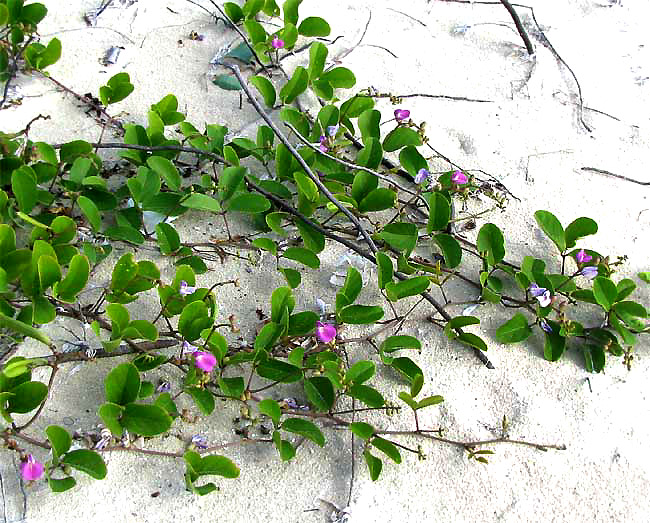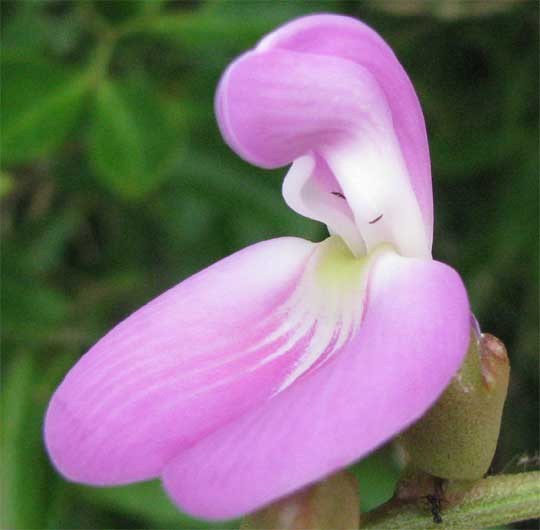Excerpts from Jim Conrad's
Naturalist Newsletter
from the January 5, 2009 Newsletter written at Mayan Beach Garden Resort 20 kms north of Mahahual; Caribbean coastal beach and mangroves, ~N18.89°, ~W87.64°, Quintana Roo state, MÉXICO
BAYBEANS FLOWERING

I've mentioned how Goat's-Foot Morning-Glory sends very long, robust vines with rosy flowers across the sand stabilizing the ridge between the sea and the mangroves. There's another very long, robust vine with rosy blossoms that's a member of the Bean Family, not the Morning-Glory, is just as common as Goat's-Foot Morning-Glory, and just as sand-stabilizing and ecologically important. That's the Baybean, CANAVALIA ROSEA, shown with its three-foliate (clover-like) leaves and coarse stems scrambling across white sand above.
A close-up of its pretty, bean-flower-type blossom is below:

If you know basic bean-blossom structure (described at www.backyardnature.net/fl_beans.htm) you may get a kick out of noticing that Baybean's two-inch- long blossoms are "upside-down" relative to most other bean flowers. The flowers have been twisted around so that their flaring "banners" or "standards" instead of topping the flower now serve as broad landing pads for pollinators at the blossom's bottom. Similarly, the boat-shaped "keel" instead of being on the bottom where it usually is, in Baybean forms a kind of curved crest rising over the flower.
I wanted to introduce you to Baybean just because of its ecological importance and its interesting flowers but once I did a little web researching I almost decided against it. That's because there's a whole subculture of drug-heads out there anxious to get their paws on Baybean's leaves and large, leathery, Lima-bean-like legumes, to use as a marihuana substitute. One "drug shaman" on the Web reports that Baybean seeds have been found in graves in Oaxaca and Yucatan, as well as in Peru, in sites dating from 300 B.C. to A.D. 900.
Beyond all that, Baybean is increasingly used as a biomass cover crop in Third World countries and in arid lands in Australia and Africa where its fast growth quickly covers the harshest soils, diminishing soil erosion.
This is a great plant for tropical xeriscaping. It grows naturally pantropically, and seeds are becoming available on the Internet.